In this community in Puerto Rico, people are making their own Hurricane Maria solutions—and forging a trail for other disaster-prone communities around the world.
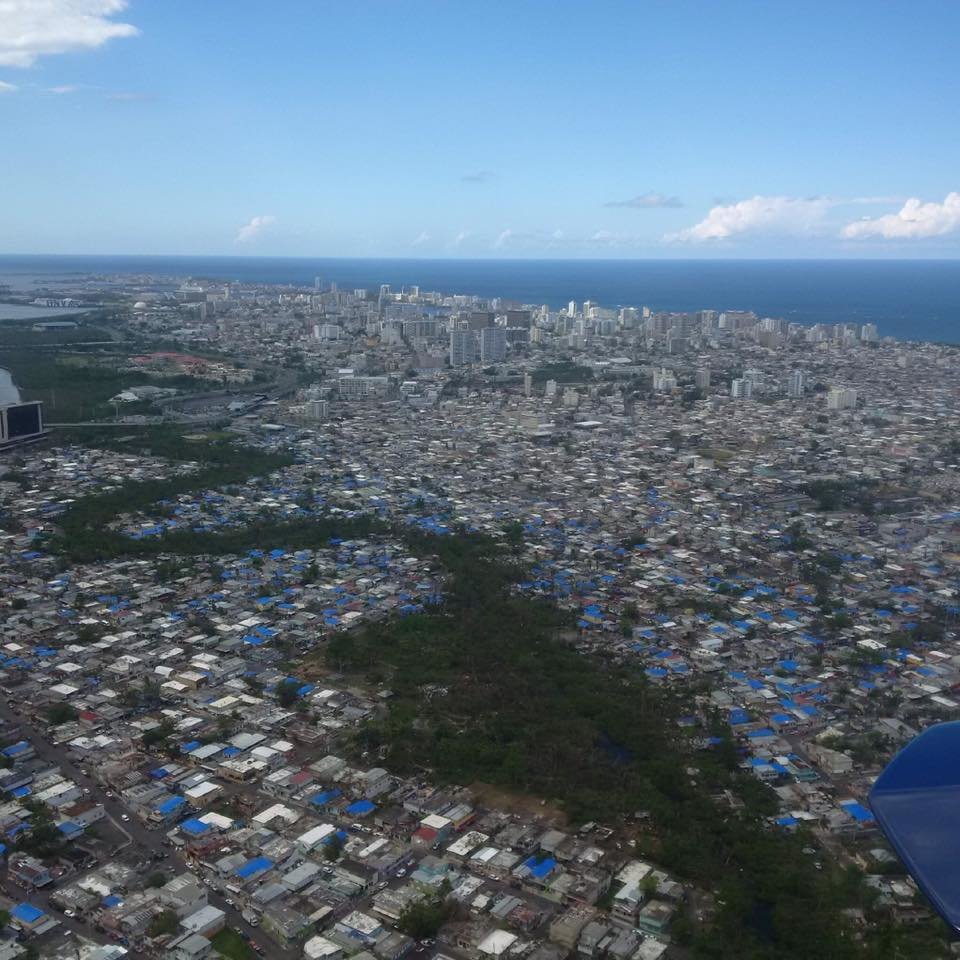
Blue, plastic FEMA tarps form a checkerboard pattern, visible from the top of the Martín Peña Bridge. Each square signifies a roofless home.
Below, in eight of the most impoverished communities in San Juan, Puerto Rico, tarps offer a thin layer of protection from the wind and the rain. Approximately 1,200 families in these low-lying communities rely on the tarps since Hurricane Maria slammed into the island six months ago on Sept. 20, 2017.
In an imagined future, drawn by architects in close concert with people who live near Caño Martín Peña, there are no blue tarps. There is, instead, a winding channel of clean water, 3.75 miles in length, that connects the San Juan Bay to the San José Lagoon. There is a thicket of mangrove trees and a boardwalk to stroll.
Since Hurricane Maria tore through Puerto Rico, advancing this future for Caño Martín Peña seems more urgent—and more possible—than before. The effort has recently been featured in news outlets from the Pittsburgh Post Gazette to Mother Jones to Rolling Stone.
“The community is finally taking its place as the protagonist of its future. People are not waiting for someone else to make decisions for them,” said Mario Núñez Mercado, who was born and raised near the channel and is now part of the ENLACE Project, a community-led initiative to transform it.
On a windy Friday last month, Mercado stood on the Martín Peña Bridge and peered down at Caño Martín Peña, littered with plastic bottles, wads of paper and rusted appliances. He told me what happens after a heavy rain. Water pools into the clogged crevices of the channel and mixes with raw, untreated sewage from thousands of homes. If it rains hard enough, the noxious mixture becomes a river, flooding houses and threatening 26,000 people who live near Caño Martín Peña.
In the wake of the most powerful hurricane to hit Puerto Rico since 1932, conditions here were untenable. Cases of Zika and Dengue fever spiked and rats ruled the streets.
“After Maria, so many people lost their homes. We were the first face many of the residents saw after the hurricane. We were the first ones to come to help and verify that this is not a lost cause,” said Mercado, a retired Puerto Rico Department of Housing employee who is now a volunteer with ENLACE, which promotes civic leadership in the Caño communities as the key to restoring it.
 ENLACE volunteer Mario Núñez Mercado is a former government employee who is now devoted to the participatory revitalization of Caño Martín Peña. He was born and raised near Caño Martín Peña.
ENLACE volunteer Mario Núñez Mercado is a former government employee who is now devoted to the participatory revitalization of Caño Martín Peña. He was born and raised near Caño Martín Peña.
Six months after Maria’s landfall, a lack of faith in local and federal government to adequately respond to Maria’s ravages permeates the island. It extends to entrenched issues, including the stranglehold of debt (now in the billions) and the mass migration of Puerto Ricans to the mainland.
“Puerto Rico was already in a crisis before Maria. Now, we’re dealing with the criminalization of poverty,” said Lyvia Rodríguez Del Valle, the executive director of the ENLACE Project.
Since Hurricane Maria hit, more than 200,000 Puerto Ricans have left the island, settling mostly in Florida. Today, more Puerto Ricans live off the island than on it, with 5 million living in mainland US.
For families with little income and savings near Caño Martín Peña, a move of that magnitude isn’t likely. Yet, life at home is increasingly difficult, especially for the elderly who now have to grapple leaky roofs, mold-infested walls, intermittent power, a rat infestation, and a slew of related health issues.
Making matters worse, most Caño residents have been denied FEMA assistance because they don’t have titles to their informally built homes. Generations in search of jobs put up unregulated housing along the channel since the early 20th century, including a wave of displaced sugarcane farmers, employees of a World War I military camp, and immigrants from the Dominican Republic. They improved their homes, little by little, if their paychecks allowed.
As insurmountable as the issues facing the Caño communities may seem, they’re not.
Representatives from the three groups spearheading the ENLACE Project—the Caño Martín Peña ENLACE Corporation, the G-8, Inc., and the Caño Martín Peña Community Land Trust—have seen what happens when Caño residents are decision makers. Their brand of inclusive disaster recovery and urban development requires care, time and money. But, as Rodríguez Del Valle will explain to anyone who takes the time to listen, this approach is worth it.
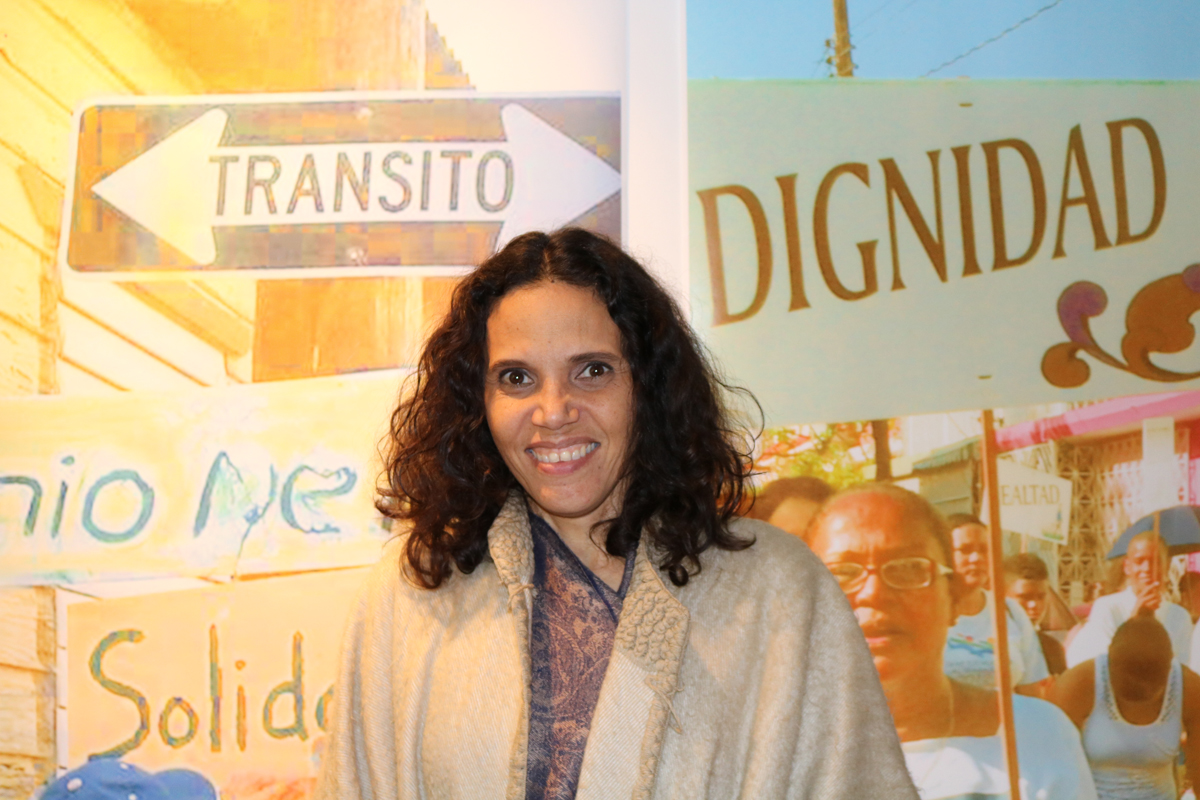 ENLACE Executive Director Lyvia Rodríguez Del Valle looks to the community for disaster recovery solutions.
ENLACE Executive Director Lyvia Rodríguez Del Valle looks to the community for disaster recovery solutions.
After Rodríguez Del Valle earned her master’s degree in urban planning from the University of Florida, she moved to Paraguay, where she worked with a community in the throes of gentrification after a natural disaster. When she came home to Puerto Rico, she saw the very same issues at play. For the past 12 years, she’s served as ENLACE’s executive director and has been deeply involved in one of the project’s crowning achievements—the establishment of the Caño Martín Peña Community Land Trust.
The land trust, which won the United Nations World Habitat Award in 2015, gives more than 2,000 people collective legal rights over 200 acres of land on which their houses are built, and it guarantees their right to affordable housing, fair resettlement prices, and access to home improvement loans. In the wake of Maria, it could also help families without traditional land titles fight denied FEMA claims.
Rodríguez Del Valle believes the land trust model has the potential to stop disaster relief policies that perpetuate extreme poverty around the world. On a February afternoon, as the sun beat down on the narrow streets of Caño Martín Peña, roosters crowed in a backyard, and soft music streamed from someone’s open window, it was easy to imagine things going ENLACE’s way. The channel would be restored to a pristine state in stages, and people nearby would have a stake in its future. As a fair relocation plan moved forward for some residents, others would have access to resources to build safer homes.
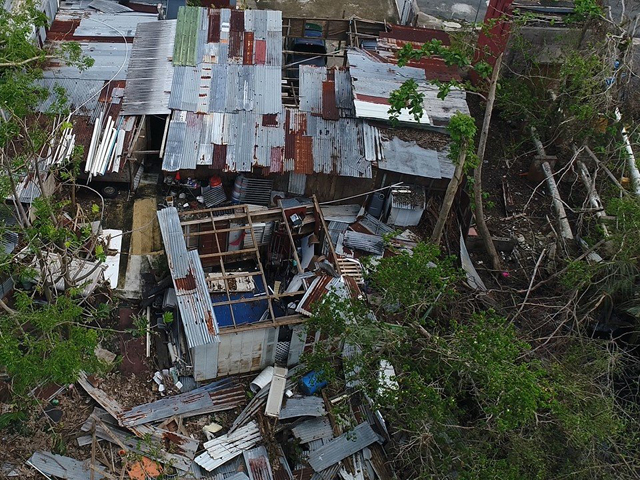
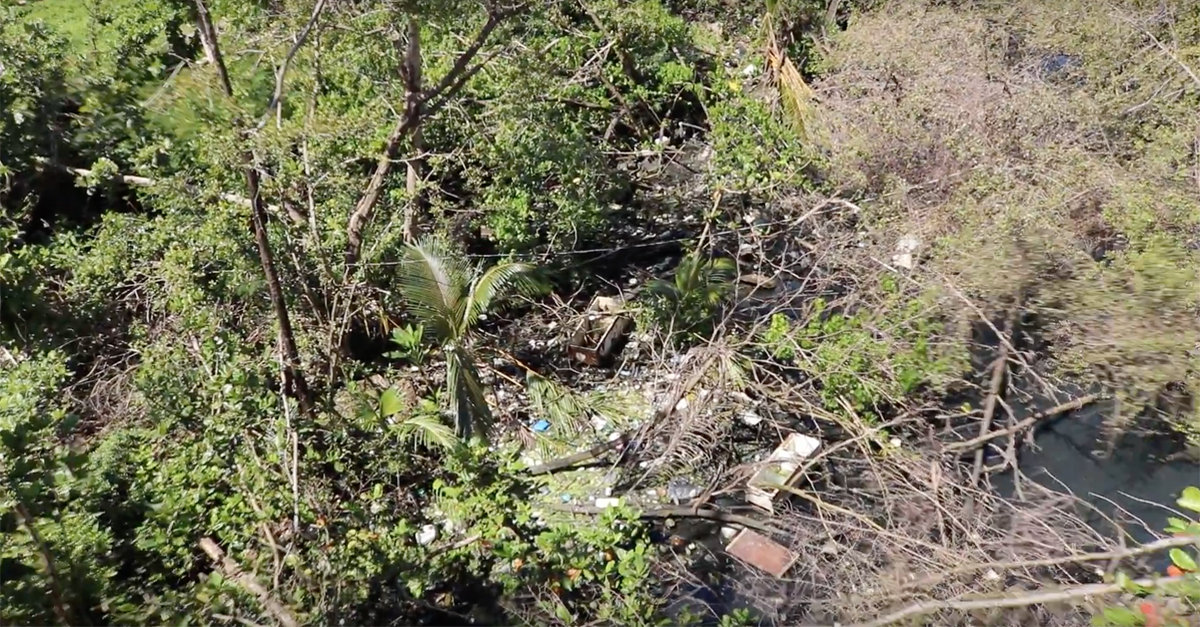
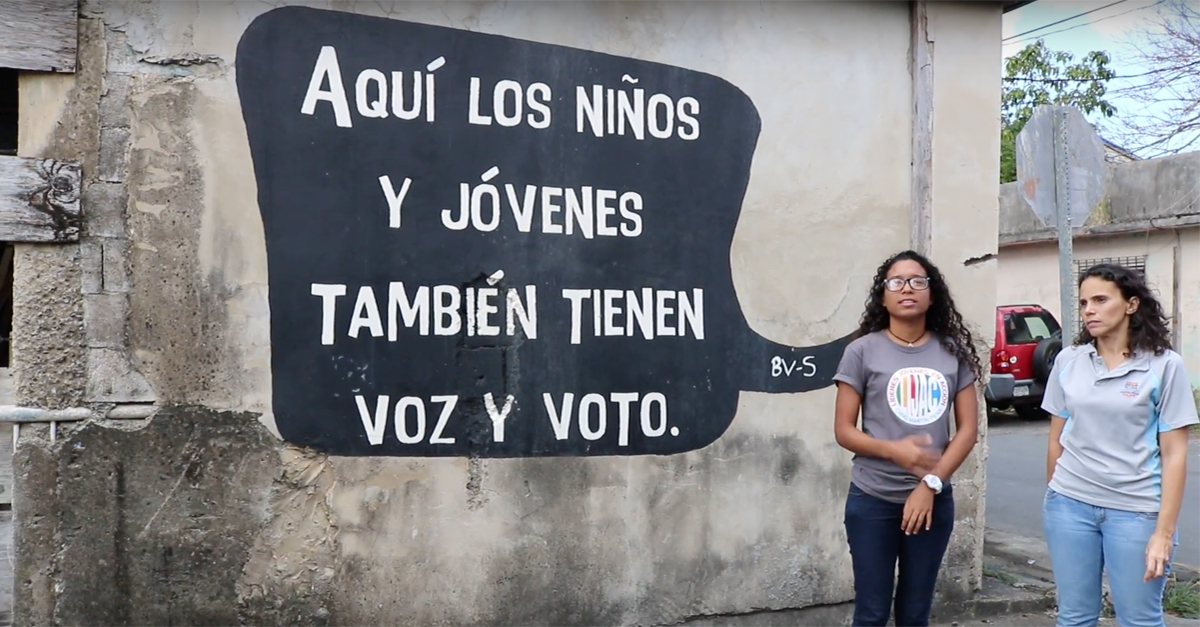 The first photo is a bird's eye view of Hurricane Maria destruction, and the second shows Caño Martín Peña. The 3.75 mile channel that connects San Juan Bay to the San José Lagoon is polluted and clogged. In the last photo, ENLACE's executive director asks a youth leader who lives near Caño Martín Peña to explain opportunities in her community.
The first photo is a bird's eye view of Hurricane Maria destruction, and the second shows Caño Martín Peña. The 3.75 mile channel that connects San Juan Bay to the San José Lagoon is polluted and clogged. In the last photo, ENLACE's executive director asks a youth leader who lives near Caño Martín Peña to explain opportunities in her community.
Even as the ENLACE Project enjoys progress and praise, its leaders remain on watch, especially in the wake of Maria. Rodríguez Del Valle doesn’t want history to repeat itself.
In 2009, the Puerto Rico Legislature reversed the legal clause that established the Caño land trust, sparking eminent domain fears. ENLACE fought back, and the case made its way to the US Court of Appeals, where a judge upheld the legislature’s reversal. Four years later, after intense community organizing, the Puerto Rico law that threatened the land trust was revoked.
Outside of Puerto Rico, the community land trust model is picking up steam. Across the United States, nearly 250 land trusts now promote equitable revitalization, according to ENLACE.
“Strong social networks are critical after a major disaster,” Rodríguez Del Valle said. “Puerto Rico is in a sense up for sale,” she added. “A lot of people are taking advantage of the low real estate.”
In response, ENLACE leaders are doubling down, and looking for investors willing to fund the civic leadership side of their mission. When people are equipped with the tools to advocate for themselves, Rodríguez Del Valle said, it’s harder for developers and government officials to “move poverty from one area to another” without addressing underlying issues, a threat that intensifies after a natural disaster the size of Maria.
As part of its plan to help Caño communities build safer homes, ENLACE is raising funds on GlobalGiving to build hurricane-resilient, zinc roofs for 12 families near Caño Martín Peña.
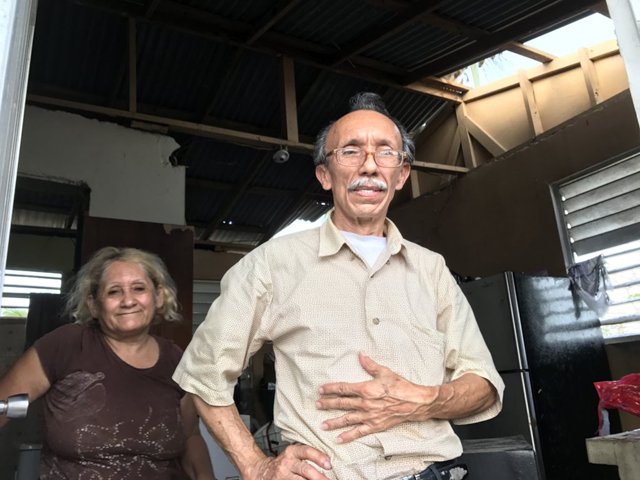 This family in Caño Martín Peña is receiving a new zinc roof from ENLACE's fundraiser on GlobalGiving.
This family in Caño Martín Peña is receiving a new zinc roof from ENLACE's fundraiser on GlobalGiving.
This is one small part of ENLACE’s multi-tiered revitalization plan. In addition to leading hurricane-related home improvement projects, ENLACE is responding to requests from families who want to get out of Caño communities and find housing elsewhere in San Juan. ENLACE has helped 600 families relocate to date.
To advance the vision for Caño Martín Peña, dredging the channel is also a crucial next step. The cost of the entire project, which includes infrastructure improvements and resident relocation, currently stands at $600 million. The federal government has yet to invest as originally planned.
To Rodríguez Del Valle, Mercado and each person involved in ENLACE, the project is priceless.
Jose Caravallo Pagán, a Puerto Rican who serves on an ENLACE rehousing committee, is fond of saying the project walks and talks and breathes—because it’s an extension of the mighty Caño Martín Peña and the people who live near it.
“That body of water, like us, has life. It deserves respect,” Pagán said.
This article was originally published in Women@Forbes.
Find exactly what you're looking for in our Learn Library by searching for specific words or phrases related to the content you need.